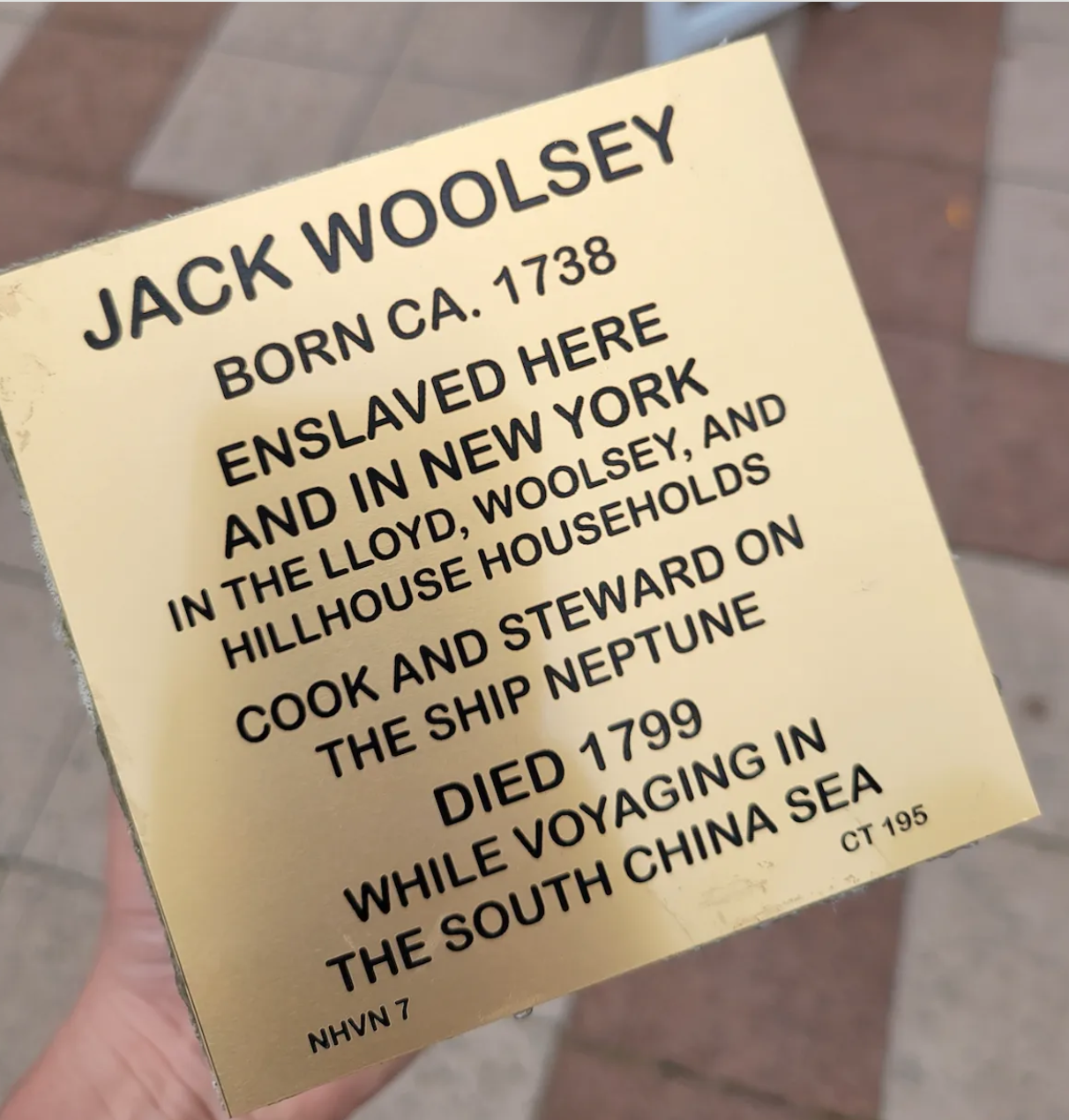
By Kate Goodwin and Jonathan Q. Berryman in the New Haven Independent on May 23, 2024
On May 21, James Hillhouse High School students, faculty, and community members gathered in front of City Hall’s Amistad Memorial to unveil a Witness Stone to Jack Woolsey, who was enslaved in New Haven in the 1790s.
Jack Woolsey was sold at the age of 19 to Henry Lloyd in Long Island; Jack joined Lloyd’s daughter’s (Rebecca) and son-in-law’s (Melancthon Taylor Woolsey) household. When her husband died, Rebecca retained legal rights to Jack. Rebecca moved to New Haven and into her daughter’s and son-in-law’s, James Hillhouse, home where Jack continued to be enslaved by Rebecca. Jack joined the crew of the Neptune as a cook. Neptune sailed from New Haven in November 1796 to the Falkland Islands and then to China, where the crew traded seal skins for silks, teas and other items. On the return voyage home, Jack succumbed to dysentery on July 14, 1799 on the voyage home in the China Sea.
James Hillhouse High School partnered with the Witness Stones Project (WSP), a nonprofit organization which seeks to restore the history and honor the humanity of enslaved individuals who helped build our communities, in 2023 funded by the Graustein Foundation.
The Witness Stones Project curriculum teaches students Connecticut’s involvement in the West Indies and Triangle Trade System, the experience of enslavement in Connecticut and highlights an enslaved person from the community in which the students reside through the analysis of primary documents.
This is the second Witness Stone James Hillhouse High School students have laid; the first stone was laid in May 2023 to honor Dick Bristol. Jack Woolsey’s stone will be installed next to Bristol’s in early June.
James Hillhouse High School was recently featured in CT Public’s “Unforgotten: Connecticut’s Hidden History of Slavery” (episode 5) for their work with WSP.
Click here to view Mayor Justin Elicker’s and Mike Morand’s addresses during the event.

Top Row: Dr. Jonathan Q. Berryman, Dennis Culliton, Joy Burns, Malik Gordon, Christopher Thompson, Makenzie Poe, Anthony Duncan, Jaiquan Harrigan, Aniya Harris, Ajah Burney, Quadir Trimble, Luis Suarez Bottom Row: Michael Morand, Kaitlyn Goodwin, Frenche Baines, David Martinez, Malaki Caraballo, Carlimar Blanco, Savanna St. Surin, Josiah Babb, Jon Roberts, De’Andre Player, Saniyah Walker, Mayor Elicker, Dr. Hope McGrath

Students Malaki Caraballo and David Martinez with Jack Woolsey’s Witness Stone



